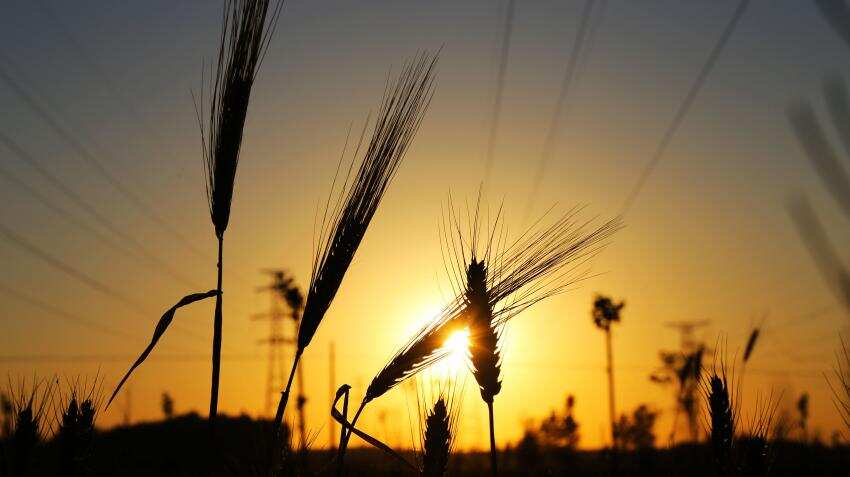Fertiliser sectors' profits to grow despite price cut
Non-urea players are expected to boost their EBITDA (earnings before interest, tax, depreciation and amortization) per tonne, led by the above price revision. However, if the raw material prices ease further, then subsidy rate may see more trims from the government for (second half yearly) H2FY17, the report said.

The government recently decided to cut the prices of key fertilisers in line with the fall in global prices of raw materials, a move that is expected to benefit farmers immediately.
However, this has also triggered off concerns in the investor community about the profitability of the sector.
In a recent notification, Minister of Chemicals and Fertilisers, Ananth Kumar, informed that Rashtriya Chemical Fertilizers (RCF) and National Fertilisers (NFL) had both decided to cut prices of Diammonium Phosphate (DAP) and Muriate of Potash (MOP) by Rs 5,000 per tonne Rs 2,500 per tonne, respectively.
In line with this, other fertiliser makers also agreed to bring down the prices of non-urea fertilisers by the same extent.
This is the first time in fifteen years that the government has cut the price of non-urea fertilisers, a move that is expected to bring a benefit of Rs 4,500 crore to farmers immediately.
Prices of key raw material -- phosphoric acid -- have corrected to $715 per MT for Jan-Mar 2016/ Apr-Jun 2016 from $810 per MT in Oct-Dec 2015. Ammonia prices have also trimmed to $350 per MT from $430 per MT over the past 6-8 months. Indian Potash agreed to source potash at $227 per MT recently versus $305 per MT in Apr-Jun, an Edelweiss Research report dated xxx.
DAP is the most widely-used phosphate fertiliser among farmers these days.
MOP, commonly known as potash or potassium chloride, is the third-largest crop nutrient group next to nitrogen and phosphorous in the fertiliser world.
Considering this, the price cut also has the investors worried about price or government control on nutrient-based subsity (NBS). However, analysts believe that the move will not hurt manufacturers' profitability.
Even the fertiliser manufacturers seem upbeat despite the price cut.
Manoj Bahety, Deputy Head Research of Edelweiss on July 5, stated, the industry players view no change whatsoever in the current NBS scheme and they expect the pricing power to remain with non-urea players.
Non-urea players are expected to boost their EBITDA (earnings before interest, tax, depreciation and amortization) per tonne, led by the above price revision. However, if the raw material prices ease further, then subsidy rate may see more trims from the government for (second half yearly) H2FY17, the report said.
In the near-term, these companies are estimated to incur inventory losses due to the price cut, Edelweiss added.
Overall, analysts remains positive on the sector and estimate profitability of non-urea players to grow over the next 12-18 months with good monsoon forecast and the liquidation of excess channel inventories.
In India, non-urea manufacturers include Coromondel International, Rashtriya Chemicals and Fertilizers (RCF), National Fertilizers Limited (NFL), Gujarat State Fertilizers and Chemicals and Zuari Agro Chemicals.
Satish Mishra and Deepak Kohle of HDFC securities on July 7, said, this event may create an impact on financials, however, it is more negative from the perspective that the government is interfering in the affairs of a decontrolled sector.
Major challenges loom in the horizon for the sector. There is a huge channel inventory of approximately 4 MT in the system versus a demand of approximately 10 MT in H1. There is a pending subsidy of approximately Rs 300 billion (no official data) for prior periods, which can be addressed to an extent of 30-35% with the budgeted subsidy, added HDFC Securities.
The analyst at HDFC Securities said there will be a partial cut till the time old inventory is cleared. RCF and NFL together made up for 2.5-3% market share in FY16/ first quarter FY17. Hence, a price cut won’t significantly change the market dynamics.
The price cut is on a par with international prices. Lower ‘K’(potassium) prices will lead to higher margins in NPK (Nitrogen Phosphorous and Potassium) fertilisers. Such a case would lead to more of NPK production rather than DAP, HDFC securities said.
As of now, we are not changing our estimates and we don’t see more than 10% risk to our estimates, HDFC Securities said.
09:30 AM IST






 India imports 42 lakh tonne of urea till Nov for over USD 1 bn
India imports 42 lakh tonne of urea till Nov for over USD 1 bn Infrastructure growth slows down to 4.8pc in Oct; fertiliser, crude oil decline
Infrastructure growth slows down to 4.8pc in Oct; fertiliser, crude oil decline Eight core sectors grow 6.8% in November: Commerce Ministry
Eight core sectors grow 6.8% in November: Commerce Ministry Index of Eight Core Industries in February rose at its slowest pace since December 2015
Index of Eight Core Industries in February rose at its slowest pace since December 2015 Infrastructure output growth at 16-month high in March
Infrastructure output growth at 16-month high in March